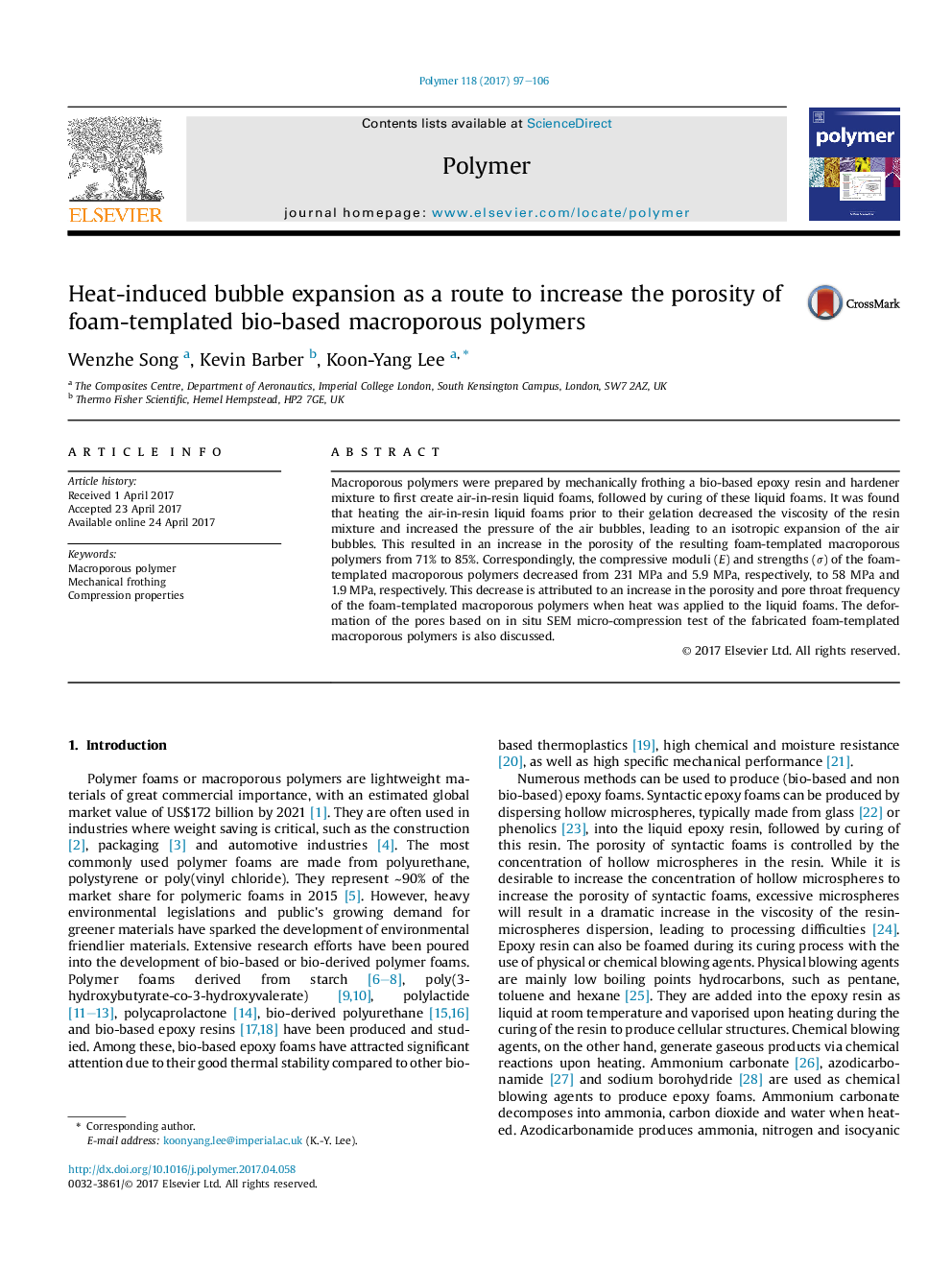| Article ID | Journal | Published Year | Pages | File Type |
|---|---|---|---|---|
| 5178045 | Polymer | 2017 | 10 Pages |
â¢High porosity bio-based macroporous polymers were prepared using a heat-induced bubble expansion route.â¢The density of heated foams decreased from 0.35 g cmâ3 to 0.18 g cmâ3. Larger pores and more pore throats were observed.â¢The compressive modulus and strength decreased from 210 MPa to 5.3 MPa, respectively, to 65 MPa and 2.0 MPa, respectively.â¢Pores with larger diameter deformed more than smaller pores under compression.â¢Pore throats are prone to initiate cracks, thus weakening the compressive properties.
Macroporous polymers were prepared by mechanically frothing a bio-based epoxy resin and hardener mixture to first create air-in-resin liquid foams, followed by curing of these liquid foams. It was found that heating the air-in-resin liquid foams prior to their gelation decreased the viscosity of the resin mixture and increased the pressure of the air bubbles, leading to an isotropic expansion of the air bubbles. This resulted in an increase in the porosity of the resulting foam-templated macroporous polymers from 71% to 85%. Correspondingly, the compressive moduli (E) and strengths (Ï) of the foam-templated macroporous polymers decreased from 231Â MPa and 5.9Â MPa, respectively, to 58Â MPa and 1.9Â MPa, respectively. This decrease is attributed to an increase in the porosity and pore throat frequency of the foam-templated macroporous polymers when heat was applied to the liquid foams. The deformation of the pores based on in situ SEM micro-compression test of the fabricated foam-templated macroporous polymers is also discussed.
Graphical abstractDownload high-res image (307KB)Download full-size image
